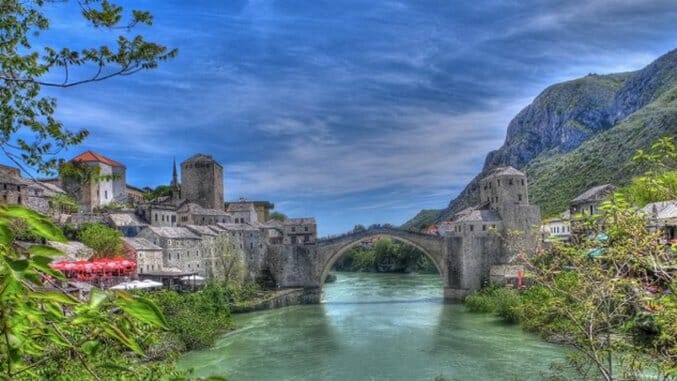Breathtaking Balkans: 5 Must-Visit Towns for 2016, Part 2

Rare is the traveler who has claimed all the capitals of the Western Balkans. Rarer still, any person—resident or otherwise—who has checked all of these hidden gems off their bucket list. Though the region was known for conflict in the 1990s, anyone who has visited this undiscovered corner of Southeastern Europe knows that those issues have long since passed. They also know that the density of culture and unspoiled beauty found here are unsurpassed.
Hugging the Adriatic Sea and split by a string of towering massifs along the Dinaric Alps and Sharr Mountains, this region has ideal locales for any adventure traveler. Now is the time to witness the mosaic of culture, architecture, peaks, rivers and lakes unsullied by heavy industry, which has compromised many other parts of Europe.
After Part One tackled the five best waterfront destinations in the Balkans, the second installment of this two-part series highlights the region’s five most beautiful inland destinations. If you’ve never heard of them, all the better. Go before the world finds out. You can thank us later.
![]()
Mostar
Bosnia and Herzegovina
The only Bosnian city to make this list is one of its most iconic. To many in the region, Mostar (pictured above) symbolizes the unique blending of cultures and traditions that has defined the mountainous country at the heart of the Balkans for centuries. The capital of the southern Herzegovina region, which runs down to Croatia’s Dalmatian coast, Mostar—particularly its old town—reflects the many influences that have swept the country since the tiny outpost on the Neretva River was urbanized under Ottoman rule in the early 16th century.
Connecting the domed churches of the west bank with the minarets of the east bank is a true architectural marvel: the Old Bridge, or Stari Most. Rebuilt since its destruction during the war in 1993, the bridge—first built by the Ottomans in 1566—is not only the city’s most important attraction, but a nod to the quiet strength and beauty of the city’s people. Make sure to pick up some burek (a savory pasty filled with meat) or cevapi (sausages served with pita) to nibble when you break from your wandering through the artisan stalls on Kujundžiluk (goldsmith’s) Street.
For guided trips to and through Mostar, contact Sarajevo-based tourism operator Green Visions.
Kolasin
Montenegro
Travel long enough in the Balkans and you will hear many places described as “one of Tito’s regular holiday destinations.” The fact that Yugoslavia’s long-time leader first came to prominence by fighting the Axis powers here and later established a landmark hotel here lends credence to that claim for the mountain town of Kolasin in northern Montenegro. A memorial in the town’s main square pays tribute to Tito’s partisans who lost their lives during World War II and the hotel is now on its third iteration: reopened as the massive lodge-style Bianca Resort and Spa Hotel in 2004.
Kolasin is perfectly situated in the black mountains for which Montenegro earned its moniker, just over an hour’s drive from the capital of Podgorica, with heart-pumping whitewater rafting available in nearby Tara River Canyon and skiing available at the impressive Kolasin Ski Resort. After a long day of rafting or skiing, make sure to try the cheesy polenta at the charming Restaurant Konoba in the main town square.
-

-

-

-

-

-

-

-

-

-

-

-

-

-

-

-

-

-

-

-

-

-

-

-

-

-

-

-

-

-

-

-

-

-

-

-

-

-

-

-










































